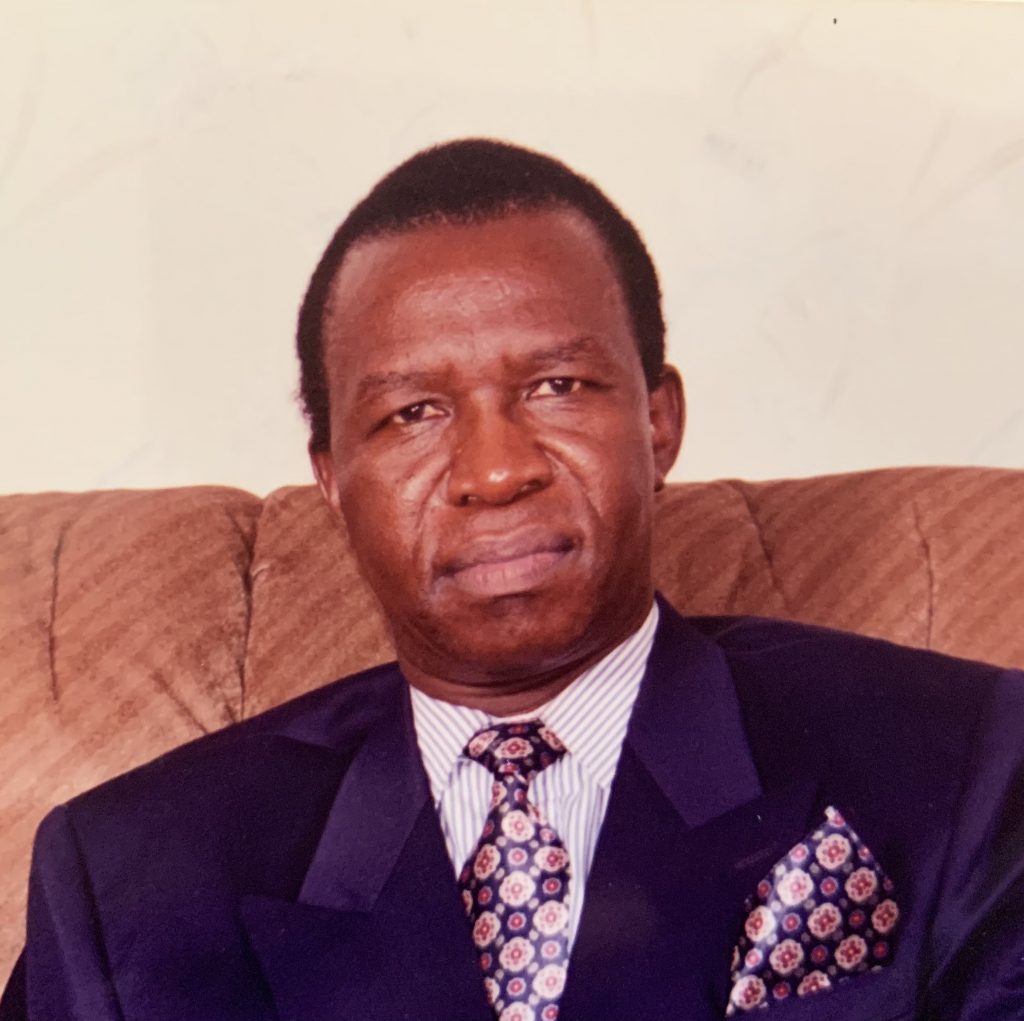
Professor Dr John Joseph Otim had a long and illustrious career in politics, academia and public service which included serving two Ugandan Presidents, meeting Pope John Paul II at the Vatican and working with His Royal Highness Prince Philip, Duke of Edinburgh.
He served as a member of Parliament and Cabinet Minister of Animal Industry and Fisheries in the Obote government and as a Special Presidential Advisor on Agric and Vet Services and later as Senior Presidential Advisor (Agric and Vet) to his His Excellency President Yoweri Museveni.
Professor Dr. John Joseph Otim was born in Kalongo Mission (present Kalongo Town Council) in then Paimol Sub-county (present Parabongo Sub-county), Agago county (present Agago District).
He was born to the family of Yusefu Ocaya and Natalia Adwar on 15th October, 1940. His grandfather was Gabriel Acaye the father of Yusefu Ocaya.
He earned a B.Sc. in Agriculture, M.Sc. in Animal Production from Makerere University and a Ph.D. in Animal Nutrition and Veterinary Physiology from Saskatchewan University in Canada.
Professor Dr John Joseph Otim passed away after a short illness at St Mary’s Hospital Locor on Saturday 4th September 2021.
The illustrous life of Professor Dr John Joseph Otim
Ancestry
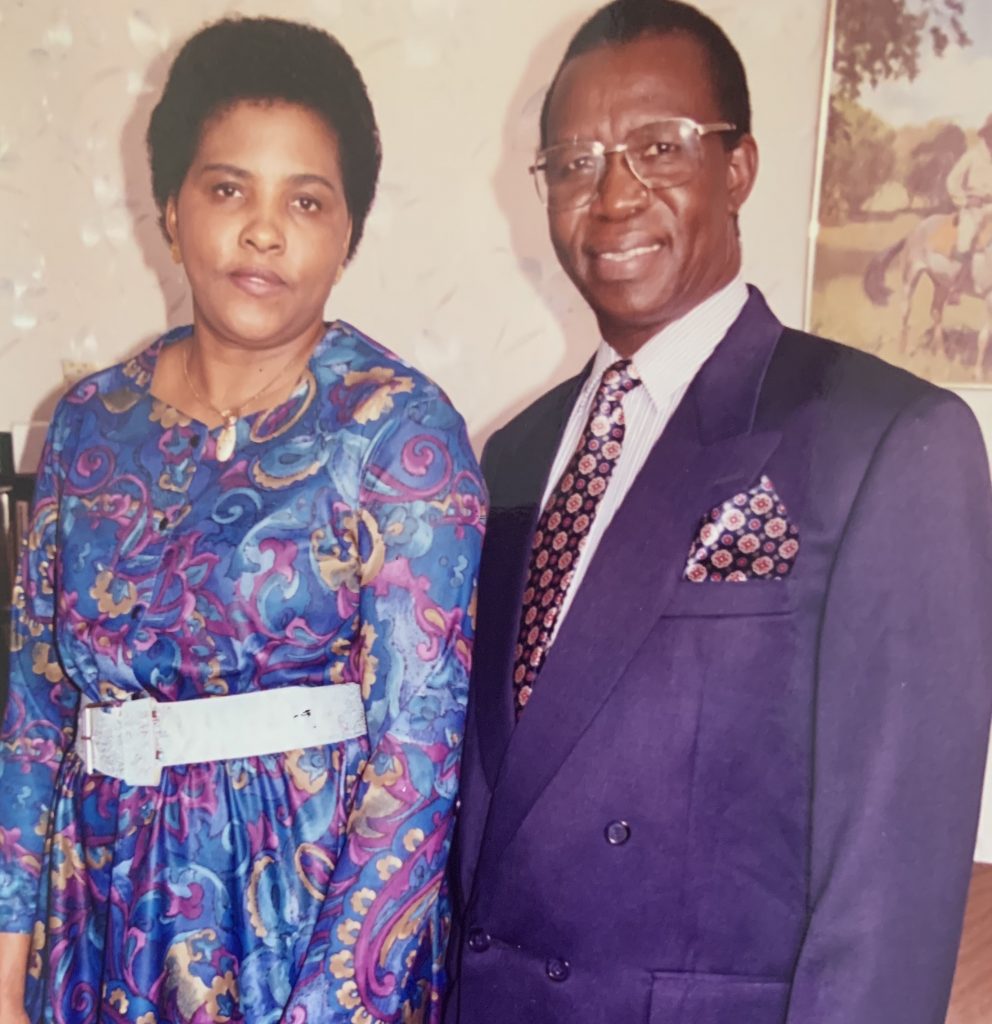
Professor Dr. John Joseph Otim was born in Kalongo Mission (present Kalongo Town Council) in then Paimol Sub-county (present Parabongo Sub-county), Agago county (present Agago District). He was born to the family of Yusefu Ocaya and Natalia Adwar on 15th October 1940. His grandfather was Gabriel Acaye the father of Yusefu Ocaya.
Ongole (nick-name Gogoi) the father of his mother Natalia Adwar migrated from Bunyoro (Paluo) to Omiya Pacua via Okaka Hill and Wol.Ongole who settled with his family in Pogoda (Nam Okora) near, River Pager. He had migrated from Bunyoro after the overthrow of Omukama.
Omol from Bunyoro (Paluo), founder of the Chiefdom of Paimol (i.e Pa Omol) and his brother Okor founder of Pokor (Pa Okor) village. Otim Lagum (Paluo) founder of Omiya-Pacua who followed them had migrated via Okaka Hill settlement of Luo descendants and reached the foot of Ogili mountain via Wol where he settled with his family. Ogili mountain is part of a mountain range link with Akwang – Parabongo – Kalongo Mountains. Chua (Chwa) who migrated from Bunyoro via Guruguru – Kilak crossing Aswa River into present Kitgum district reached Nam Okora where he met Otim Lagum and other smaller clans, which had settled near Ogili mountain. The composite lineages of Otim Lagum, Chua and other smaller groups formed Omiya-Pacua.
His father Yusefu Ocaya was one of the sons of Gabriel Acaye who was one of the sons of Lolingamoi who had settled with his families between Lopala Hill and Layita Hill in Omiya- Pacua.
Lolingamoi and his families from Labwor-Otuke hills migrated to Omiya Pacua route via Lapono mountain, Amyel hill, Labwordwong, Paimol to Omiya-Pacua. He established lineage known today as Kibwar Clan comprising of sub-clan Kakal and Kalek when a strange disease nearly wiped out all his sons leaving widows and children, one of his surviving sons, Gabriel Acaye after getting permission from Colonial authority in Paimol Sub-county migrated with families and settled in fertile land that lies between Lopala Hill and Ogili mountain. He named the area Lomoi in remembrance of his father Lolingamoi.
Yusefu Ocaya and Natalia Adwar who underwent Catechumen training in Paimol and Kitgum were baptized and got married in Kitgum Catholic Mission. Following the killing of Daudi Okello and Jildo Irwa they were selected to travel with Fr. Gamboretto, the first Catholic Priest to come to Paimol, Palamuku village (Wii-Polo) to collect the remains of the two Catechists and also to start a Mission where the two Catechists were killed by rebellious local elders in October 18th 1918.
When they arrived in Paimol, Palamuku village (Wii-Polo), they were shown the termite hill where the remains of the two Catechists were found. However, they were advised to go to Kalongo, which had reliable water source to start a Mission in their memories.
On arrival in Kalongo the Priest built a Grass-Thatch Church at the foot of Kalongo Mountain to start a Mission. That is how Yusefu Ocaya and Natalia Adwar both from Omiya-Pacua settled in Kalongo. Yusefu Ocaya was given a nick name (Lagwok) because he was the one that received and looked after new Christian laity arriving to settle in the new Mission until they built their own homes.
Early life
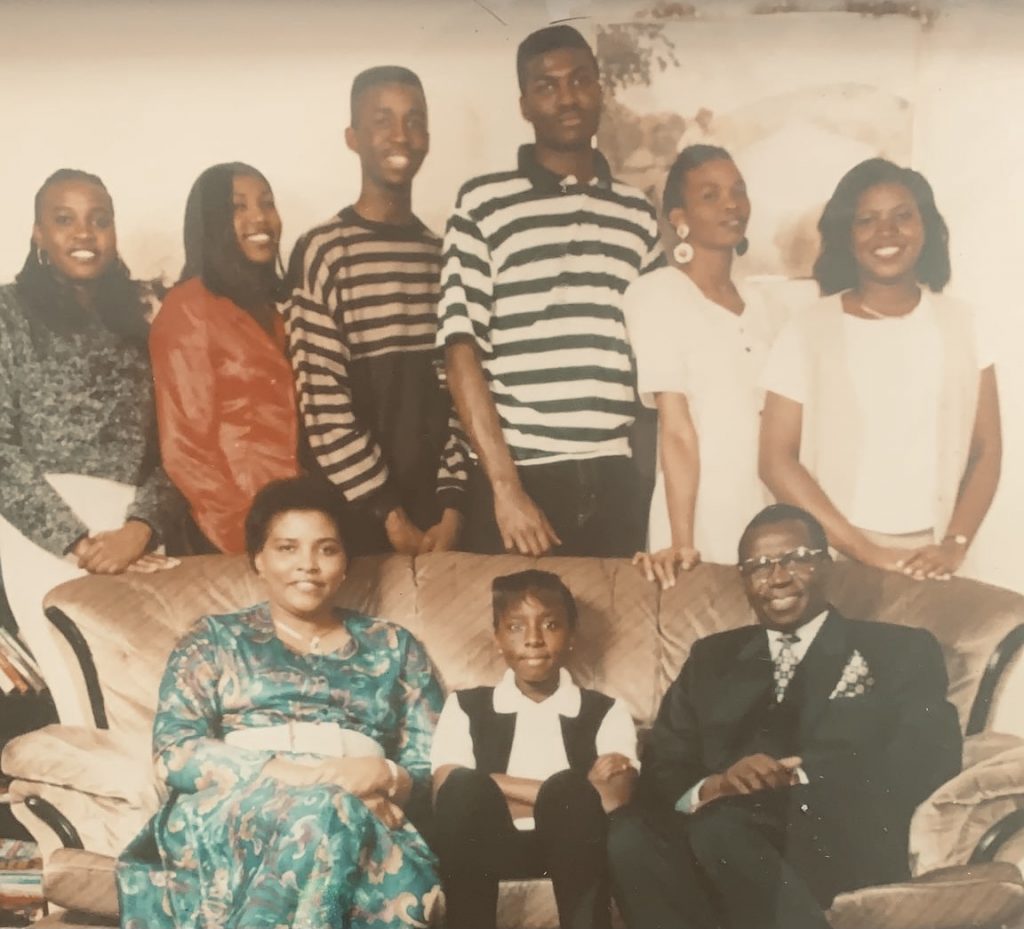
John Joseph Otim Lagum was born in Kalongo Mission on 15th October 1940 and baptized John Joseph. The surname Otim Lagum was given in remembrance of his tall and huge great ancestor called Otim Lagum, a skillful hunter and a warrior who could cultivate one acre alone in one day (from morning at 5:30 am till 7:00 pm). He was a good eater too. He could finish a complete goat meat alone in a day. His spears were so heavy that ordinary men could not throw with ease. His enemies feared him. He used to move with a bell tied around his waist making loud noise, which scared his enemies.
Education

John Joseph Otim Lagum started his education in Kalongo Catholic Primary School 1949 – 1955, thereafter went to St. Vignato Junior Secondary School in Kitgum Catholic Mission 1956 – 1957. From there he attended year three of Junior Secondary School in St. Joseph Secondary School in Gulu Catholic Mission.
He was admitted to St. Alysious College Nyapea, 1959 – 1962. He attended A-level in St. Mary’s College Kisubi 1963 – 1964. He joined Makerere University as an undergraduate student in the Faculty of Agriculture 1965 – 1968 where he graduated with BSc Hon. Agric.
Right from Junior Secondary schools up to University, he was made a Prefect/ Students Minister.
Early career and PhD study
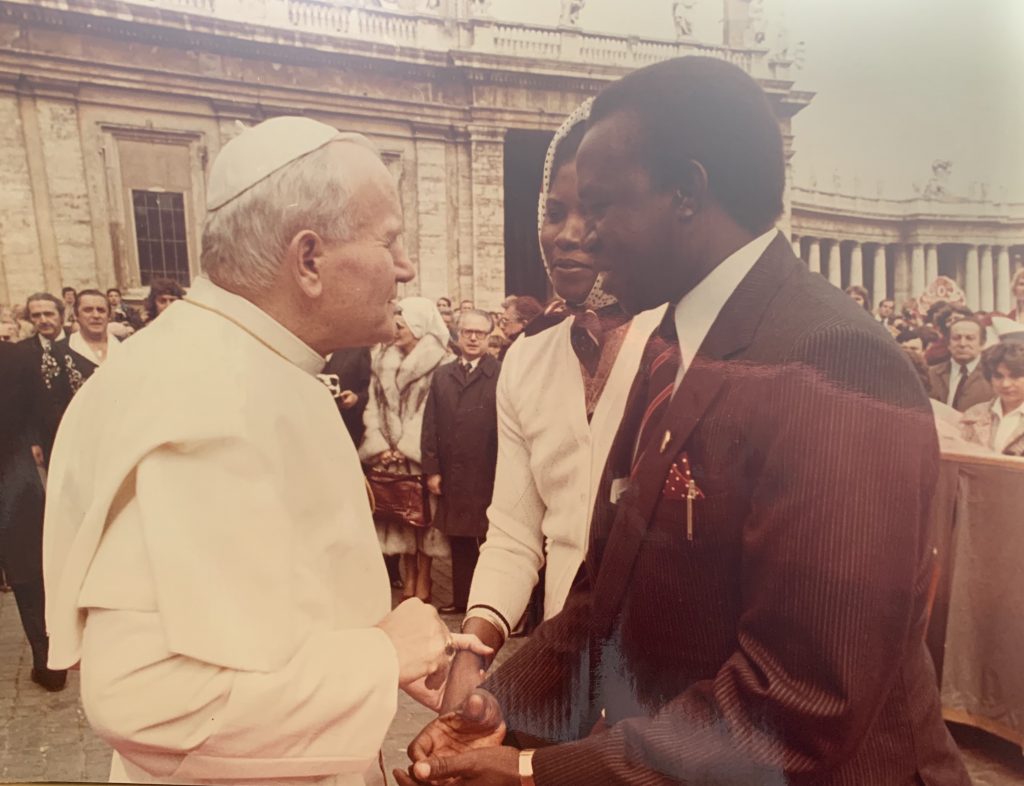
After successfully graduating from Makerere University he was immediately recruited by the Ministry of Agriculture and Cooperative as a Research Officer. He was posted to Kawanda Research Station where he worked for a few months then transferred to Serere Research Station 18 miles outside Soroti where he worked under Dr. Harris Stobbs and rose to Principal Researcher and Head of Livestock breeding, cross-breeding and pasture/range management programmes.
His other research areas included pasture seeds development and livestock-crop rotation programmes covering Eastern and Northern Uganda ecological zone including part of Bunyoro.
While at Serere Research Station his livestock breeding and cross-breeding experiments, as well as research in pasture agronomy, grazing, pasture/ livestock crops rotation system (a 3 – 3years rotation system), attracted scientists from Queensland, Australia, USA, Britain, South Africa, South America, Germany and across Africa.
He contributed to the development of a Blue Print on beef cattle breeding, cross-breeding and range management that was taken by scientists who fled Amin’s brutal regime and got a job in Botswana. The blueprint laid the foundation for Botswana’s most successful beef industry on the continent of Africa. In 1969 Food and Agriculture Organisation (FAO) contracted him as a Principal Researcher to be the team leader of Scientists tasked to establish beef cattle feedlot feeding model based on feeding maize brand/ silage at Lanet in Nakuru, Kenya. This work laid the foundation of the feedlot system in East Africa.
His exceptional quality research works and ability to communicate research findings clearly to visitors and University students who visited Serere Research Programmes excited Professors from Makerere University who persuaded the Permanent Secretary Ministry of Agriculture and Cooperative to release him to go to MUK and lecturer in the Faculty of Agriculture and Veterinary Medicines. With permission granted he was recruited by MUK in 1972 as a Lecturer. He completed his M.Sc. in Animal Production in 1973. Owing to the quality of his Thesis, his External Examiner, Prof Dr. Tillman from Michigan State University U.S.A. used the Thesis to start Agriculture and Veterinary Medicines Faculty and Research programmes in Pupua New Guinea University.
In 1975 Otim was awarded CIDA scholarship to pursue his PhD study at the University of Saskatchewan, Saskatoon, Canada which he not only successfully completed in 1978 but he managed to solve Canada a quarter century cattle bloating problem connected with winter feeding of alfalfa hay to both dairy and beef cattle. The bloating problem had caused heavy loss of cattle fed alfalfa hay in the winter season.
Based on that success he was invited to present his research findings to graduate students in various Universities across Canada like Ontario, Winnipeg, Alberta etc. and to talk to graduate students in Michigan State in USA and University of Reading in UK who were working on similar livestock feeding problems.
In appreciation of his contribution, the Premier of Saskatchewan Province offered Dr. Otim a Canadian citizenship and asked him to stay in Canada. But because of his patriotism to his country Dr. Otim declined the offer politely and returned to Makerere University in 1978 even when the war against the Amin regime was already raging on.
Political career and public service
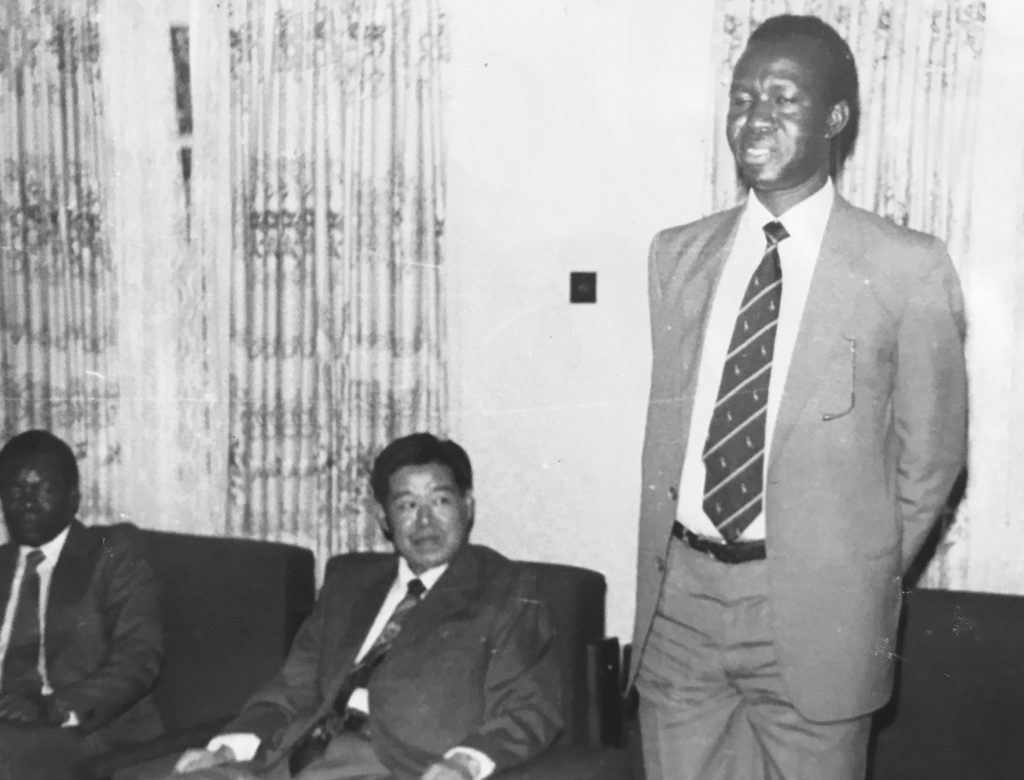
He continued teaching at MUK till 1980 when elders from home sent a delegation to him to convince him to come home to represent the people of Kitgum East Constituency on UPC ticket. He obliged for the sake of his people and took leave of absence from MUK. With full support from UPC Party Leader A.M.Obote, his parents well-known background, his exceptional ability to relate to people and respect for elders and women he registered a landslide victory despite coming late in the race and being confronted with intense faith-based political bigotry between UPC and DP. He became the first Catholic to win on UPC ticket in a constituency where Protestants dominated UPC candidates could not win because the constituency was dominated by Catholics who gave solid support to DP political party.
He also became the first youngest full Cabinet Minister, popularly referred to as the “First Born”. Interestingly, he was the first full Cabinet Minister to be reshuffled within three (3) days after being appointed the Minister of Works. He was reshuffled to portfolio of Minister of Animal Industry and Fisheries because of outcry from many citizens of Uganda who felt he would serve better in a Ministry he had served for years as a Researcher, Lecturer and understood its portfolio very well.
He was the first Obote’s Cabinet Minister to be targeted for assassination in 1981. The assassination attempt was made as he was getting out of his Office in the Ministry Head Quarter at Wandegeya but with God’s protection, he survived. The second unsuccessful attempt on his life was made in July 1985 by a platoon of UNLA who stormed his Office in Wandegeya Kampala on a false accusation.
He was the first Minister to reject government-renting offices and constructed a new and better Ministry H/Q building (presently Housing Ministry of Public Services) to replace the old smaller Head Quarter building used by the late V.P and Minister of Animal Industry and Fisheries, Hon. John Babiiah (R.I.P). This saved the government from spending huge money renting offices.
After the overthrow of the Obote II government by Bazilio Olara Okello and Tito Okello Lutwa in a military coup of July 1985 followed by the overthrow of the 6-month old Military Junta by NRA in 1986, he had to flee to Kenya where he was appointed at the level of Associate Professor by University of Nairobi to lecture in the College of Agriculture and Veterinary Medicines.
While there, he developed the concept of zero-grazing structure and husbandry for small–holder dairy farmers in Kenya which proved a great success. He also pioneered the development of biogas using dungs collected from zero-grazing and mixed with other green vegetable waste to provide gas for home use.
When he was contracted by FAO to run the Women Dairy Farmer Project, he demonstrated with women group dairy farmers that under good dairy management and feeding on improved pastures, up to 7 litres of milk could be produced without using any supplementary feeding of dairy cubes and silage. The zero-grazing, biogas and grazing improved pasture models became a great success throughout East Africa and beyond. He was also a team leader for dryland farming research. He became the Chairman of East Africa Environmental Conservation Network and Biodiversity conservation for 6 years.
On his return to Uganda in 1994 as Special Presidential Advisor on Agric and Vet Services and later as Senior Presidential Advisor (Agric and Vet), a position he has held to the present, he advised His Excellency the President. He was elected the founder President of the Agricultural Council of Uganda (ACU) in 1998 with the motto: The Future belongs to the Organized and Empowered.
He championed the cause of small-holder farmers and SMEs as the bedrock of sustainable agricultural development in Africa under a Nucleus-Out growers farming model. The Nucleus-Out Growers Model developed by him improved connectivity, technology and best practices adoption and market linkages between large-scale commercial farmers and small-holder farmers organized as Out growers ’/business clusters across Africa. The model accelerated technology and best practices transfer from large-scale nucleus farmers to small-holder farmers.
As Special Advisor of His Excellency the President Y.K Museveni on Agriculture and Veterinary services and President of Agricultural Council of Uganda (ACU) coupled with his outstanding contribution worldwide to modernization of agriculture, Prof. Dr. John. J. Otim was elected the overall Chairperson of the International Organizing Committee of the first ever All Africa Conference on Assuring Food and Nutrition Security for all by 2020. The Conference was co- hosted by the International Food Policy Research Institute (IFPRI) Washington DC and the Uganda Government under the leadership of H.E. Yoweri Kaguta Museveni in Munyonyo, Kampala 1st – 3rd April 2004. The Conference which brought over 500 distinguished researchers, policy makers, technocrats and politicians from around the globe and two distinguished African Presidents namely; His Excellency Obasanjo of Nigeria and Abdul Wade of Senegal kick started the global recognition of the central role of agriculture in socio-economic development, in developing countries. It was a game changer and a turning point when the World Bank recognised the role of Agriculture and Nutrition security in development. The World Bank accordingly launched a World Development Report: (2007) with the heading: Agriculture for Sustainable Development.
At spirituality level, in early 1993 when he got wind that the planned visits to Uganda of Pope John Paul II he had met in 1983 was going to be restricted to Kampala and Kasese, he wrote to Pope John Paul II (R.I.P) (now St. John Paul II) whom he had met twice before in the Vatican, appealing to him to cause extension of his visit to Gulu in Northern Uganda during his visit to Uganda in February of that year. His Holiness replied positively through his Secretary of State via the Office of Cardinal Otunga (RIP) of Kenya promising to ensure that he visited Gulu to share the pain of the suffering people of Northern Uganda especially the Acoli people.
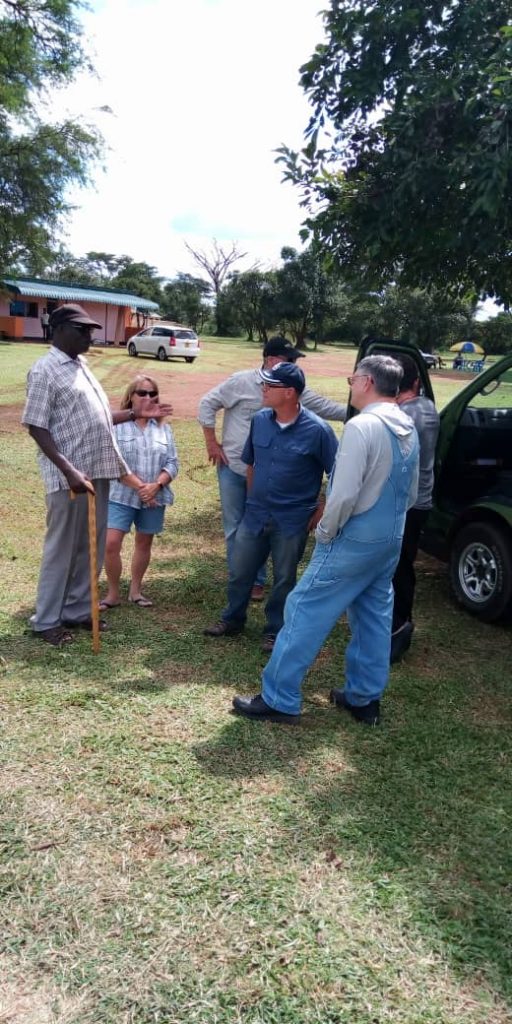
On return to Uganda in 1994 Prof. Dr. Otim kick-started a process of recognizing the two Catechists Daudi Okello and Jildo Irwa. The move was welcomed and supported by Rev. Fr. Otollini (R.I.P), Bishop Martin Luluga and His Grace Archbishop John Baptist Odama. The process and their effort led to the Beatification of the two Catechists Daudi Okello and Jildo Irwa by Pope John Paul II (R.I.P) on 20th October 2002 in the Vatican. Two reasons motivated him to appeal to the Church to take up the matter.
Thanking God through intersession prayer of Pope John Paul II (R.I.P) for his safe return to Uganda at a time when things were difficult for Luo- speaking Acoli. Second, Professor Dr Otim’s focus on the two Catechists was also a fulfilment of the will of his father, Yusefu Ocaya Lagwok who had left a message before he died urging him to follow up the matter of Daudi Okello and Jildo Irwa. His father Yusefu was convinced the two Catechists were killed for evangelizing people about Jesus Christ and the Kingdom of God in Paimol, Wii Polo.
The above humble contribution by Prof. Dr John Joseph Otim to the country and mankind through the modernization of the agriculture sector was driven by his belief that no sustainable democracy and peaceful co-existence have ever been built on empty stomachs. Professor Dr John Joseph Otim in the twilight years of his life focused on community empowerment, through agroforestry, modernization of Agriculture, promotion of food and nutrition security and the rich Luo cultural heritage and traditional food.
In his capacity as CEO and Chairman of NOGETEC, he was linking tourism with agriculture, food and nutrition security and culture as the bedrock for inclusive sustainable socio-economic development and peaceful co-existence in diversity across Africa, Uganda, Acoli Sub-region in particular.
